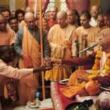The Bhagavad Gita
Description
The Bhagavad Gita is the best known of all the Indian scriptures, and Eknath Easwaran’s best-selling translation is reliable, readable, and profound.
Easwaran's 55-page introduction places the Bhagavad Gita in its historical setting, and brings out the universality and timelessness of its teachings. Chapter introductions clarify key concepts, and notes and a glossary explain Sanskrit terms.
Easwaran grew up in the Hindu tradition in India, and learned Sanskrit from a young age. He was a professor of English literature before coming to the West on a Fulbright scholarship. A gifted teacher, he is recognized as an authority on the Indian classics and world mysticism.
The Bhagavad Gita opens, dramatically, on a battlefield, as the warrior Arjuna turns in anguish to his spiritual guide, Sri Krishna, for answers to the fundamental questions of life. Yet, as Easwaran points out, the Gita is not what it seems – it’s not a dialogue between two mythical figures at the dawn of Indian history. “The battlefield is a perfect backdrop, but the Gita’s subject is the war within, the struggle for self-mastery that every human being must wage if he or she is to emerge from life victorious.”
Arjuna’s struggle in the Bhagavad Gita is acutely modern. He has lost his way on the battlefield of life and turns to find the path again by asking direct, uncompromising questions of his spiritual guide, Sri Krishna, the Lord himself. Krishna replies in 700 verses of sublime instruction on living and dying, loving and working, and the nature of the soul.
Easwaran shows the Gita’s relevance to us today as we strive, like Arjuna, to do what is right.
“No one in modern times is more qualified – no, make that ‘as qualified’ – to translate the epochal Classics of Indian Spirituality than Eknath Easwaran. And the reason is clear. It is impossible to get to the heart of those classics unless you live them, and he did live them. My admiration of the man and his works is boundless.” – Huston Smith, author of The World’s Religions
More Details
Table of Contents
From the Book - Second edition.
Published Reviews
Choice Review
Choosing a favorite translation of the Bhagavad Gita is like choosing from a large gourmet menu: personal preference wins over all other criteria, and there can be no general agreement on which one is ``best.'' Best for whom is a more important question. Translations that pay close attention to critical problems of textual criticism-e.g., Kees W. Bolle (CH, Jan '80) and Franklin Edgerton (various editions)-appeal to the linguistic scholar. A.C. Bhaktivedanta's (various editions) and similar renderings are useful chiefly in their sectarian contexts. Eliot Deutsch (1968), P. Lal (CH, Mar '74), and Ann Stanford (1970), to mention a few others, present very readable translations. Maintaining a careful balance between introductions to each chapter and the text itself, Easwaran transposes the spirit of the Gita into our society's consciousness without compromising the spiritual depth, which he set forth in his extensive three-volume commentary, completed in 1984 (CH, May '76, May '80, May '85). Strongly recommended for undergraduate student use and for the general reader.-H.M. Buck, Wilson College






























